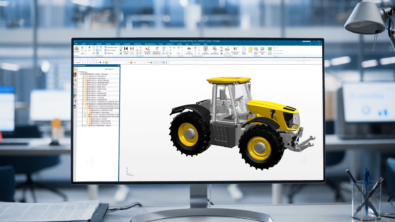Products
Product Variability Continuum – The Business of Product Variation

The world economy trades countless products among industries and consumers.Across that myriad of products, companies tailor their processes for how product lines are planned, engineered, manufactured and delivered.A product variability continuum of approaches ranges from standard products, configurable products, engineer to order and purely custom offerings.
To learn more about Teamcenter Product Configurator software, attend one of these on-demand webinars: Product Customization at Scale: Reaching a Market of One Profitability or Strategies for Optimizing Product Innovation by Managing and Optimizing Product Variations. To learn more about Rulestream ETO software, attend one of these on-demand webinars: An Introduction to Engineer-to-Order Process Automation for Industrial Machinery using Rulestream or Create Custom Engineering Applications with Minimal Coding. Product variability continuum.
Product variability continuum.
 Desirable starting point?
Really the most variable product definition is a blank sheet of paper – the only limits are physics and imagination.
There are limited cases when companies can afford to define, engineer and build a unique new product from scratch and few customers willing to pay the price for a truly one-of-a-kind custom product.Product configurator capabilities are an enabler for reusing proven engineering, parts, material and tooling while also offering a variety of offerings to meet each customer’s requirements.Overall the engineering activities may be very similar to define a standard product or a custom product – the difference is when the engineering activity occurs relative to the customer order.The decision is based on business decisions of capacity and volume to most efficiently balance the cost of engineering and manufacturing the product to the market revenue opportunities.
For standard products there are two common approaches.One is to start from one design and iteratively derive similar additional standard products over time increasing size, capacity or additional features.The other is to define a platform up-front which configures to specific standard offerings.Electronics and consumer goods often follow these patterns as well as machinery and other industries where high volume manufacturing is the norm.
For configure to order (CTO) products, the definition includes a combination of product planning to decide what features to offer, rules constraining defaults and combinations of those features and the engineering of solution content to meet all valid combinations of those features.Generally the theoretical combination of product configurations is so large that it is impractical to configure into standard products – there might be billions of combinations!A relatable example of configure to order products are passenger cars – there are many colors, feature combinations and packages of features but any valid order can be built without additional engineering required to fulfill the order.Teamcenter Product Configurator provides tools for defining the variability, rules and configured content to execute CTO processes.
Engineered-to-Order (ETO) products are bid, engineered and built in as a response to a specific customer order.The product may not be more complex than the configure-to-order product.The decision to execute the business in this fashion may be based on a number of factors:
Desirable starting point?
Really the most variable product definition is a blank sheet of paper – the only limits are physics and imagination.
There are limited cases when companies can afford to define, engineer and build a unique new product from scratch and few customers willing to pay the price for a truly one-of-a-kind custom product.Product configurator capabilities are an enabler for reusing proven engineering, parts, material and tooling while also offering a variety of offerings to meet each customer’s requirements.Overall the engineering activities may be very similar to define a standard product or a custom product – the difference is when the engineering activity occurs relative to the customer order.The decision is based on business decisions of capacity and volume to most efficiently balance the cost of engineering and manufacturing the product to the market revenue opportunities.
For standard products there are two common approaches.One is to start from one design and iteratively derive similar additional standard products over time increasing size, capacity or additional features.The other is to define a platform up-front which configures to specific standard offerings.Electronics and consumer goods often follow these patterns as well as machinery and other industries where high volume manufacturing is the norm.
For configure to order (CTO) products, the definition includes a combination of product planning to decide what features to offer, rules constraining defaults and combinations of those features and the engineering of solution content to meet all valid combinations of those features.Generally the theoretical combination of product configurations is so large that it is impractical to configure into standard products – there might be billions of combinations!A relatable example of configure to order products are passenger cars – there are many colors, feature combinations and packages of features but any valid order can be built without additional engineering required to fulfill the order.Teamcenter Product Configurator provides tools for defining the variability, rules and configured content to execute CTO processes.
Engineered-to-Order (ETO) products are bid, engineered and built in as a response to a specific customer order.The product may not be more complex than the configure-to-order product.The decision to execute the business in this fashion may be based on a number of factors:
-
- For low volume production – engineering solutions in advance may not be practical
-
- For solutions with site or application specific requirements flexibility in modeling is necessary.For example, equipment installations in a facility such as switch gear.
-
- For some solutions analysis and computations are necessary to simulate the operation of the solution to determine another supporting requirement.For example the cooling requirements for equipment is a complex function of the equipment, its operating profile and environment.
-
- Elements of the solution require hands on engineering in combination with parametric or automated models.
 About the author: Mark Heinrich is part of the Teamcenter Integrated Product Development management team specializing on BOM managementand product variation management.
About the author: Mark Heinrich is part of the Teamcenter Integrated Product Development management team specializing on BOM managementand product variation management.


